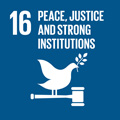- Docente: Antonio Clemente Domenico Panaino
- Credits: 6
- SSD: L-OR/14
- Language: English
- Teaching Mode: In-person learning (entirely or partially)
- Campus: Ravenna
- Corso: Second cycle degree programme (LM) in International Cooperation on Human Rights and Intercultural Heritage (cod. 9237)
-
from Jan 29, 2025 to Feb 28, 2025
Learning outcomes
Basic introduction to the ethno-cultural and ethno-religious complexity of the Iranian area in its historical development. At the end of the course the students should be able to frame the main characters of the Iranian world since its beginning to nowadays, distinguishing the fundamental religious and political ideas of this cultural and strategic space.
Course contents
The course is dedicated to the history of Zoroastrianism in its controversial development. Particular attention will concern the study of the relations between Zoroastrianism and the Indo-Iranian ritual tradition, but also that of the Iranian Late Antiquity period in which Manichaean, Christian and Buddhist communities played an enormous influence on this part of the world.Particular cases concerning ethno-linguistic and ethno-religious minorities with special regard for the Iranian area will be discussed during the course. In particular the bulding of a royal ideology and the concept of sacred royalty will be developed during the lessons.
Readings/Bibliography
A. Panaino, "Zoroastrismo e religioni dell'Iran preislamico", in Dizionario del sapere storico-religioso del Novecento, a cura di A. Melloni, Bologna 2010, pp. 1752-1792.
Emmerick, Ronald E. and Macuch, Maria, (eds.), The Literature of Pre-Islamic Iran. Companion Volume I to A History of Persian Literature. London: Taurus.
A. Panaino, The baγān of the Fratarakas: gods or ‘divine’ kings?, in Religious themes and texts of pre-Islamic Iran and Central Asia. Studies in honour of Professor Gherardo Gnoli on the occasion of his 65th Birthday on 6th December 2002. Ed. by C. G. Cereti, M. Maggi and E. Provasi. (Beiträge zur Iranistik 24). Wiesbaden 2003, pp. 283–306.
A. Panaino, Astral Characters of Kingship in the Sasanian and Byzantine Worlds, in Convegno internazionale: La Persia e Bisanzio (Roma, 14 – 18 ottobre 2002). (ACL 201 Is.M.E.O.). Roma 2004, pp. 555–594.
A. Panaino, The King and the Gods in the Sasanian Royal Ideology, in Sources pour l’histoire et la géographie du monde iranien. Edité par R. Gyselen. (Res Orientales XVIII). Leuven 2009, pp. 209–256.
Teaching methods
Frontal lessons using textual material for students; discussions about the items also with the presence of other colleagues.
Students who are affected by learning disability (DSA) and in need of special strategies to compensate it, are kindly requested to contact the Teacher, in order to be referred to the colleagues in charge and get proper advice and instructions.
Be informed that the use of generative artificial intelligence is considered a form of plagiarism.
Assessment methods
The examination consists in a discussion of the main items presented during the lessons: political and religious history of Ancient Iran and problems of Iranian ethno-linguististics.
The acquisition of a solid vision of the subjects presented in the class and the knowledge of the related arguments with a precision in the terminology and an ability in the critical reference to the different aspects of the discipline, will be recognized with the highest votes, as excellence. A mnenomic knowledge with a correct language but not always consistent and critically argumented will be considered as worth of a discrete valutation.
Weak points in the preparation with an unfitting language, mistakes in the chronological determinations of the poblems, incompetence in the bibliographical items, and uncritical references, will be considered as insufficient.
It is mandatory that the student pays attention on the technical terminology, the correct spelling of the Iranian terms, and in particular in the framework of the linguistic problems, that he/she is in condition of expressing in a formal way the phenomena that have been treated in the class.
In any case, the some standard rules will be followed in conformity with other disciplines:
The ability of the student to achieve a coherent and comprehensive understanding of the topics addressed by the course, to critically assess them and to use an appropriate language will be evaluated with the highest grades (A = 27-30 con lode).
A predominantly mnemonic acquisition of the course's contents together with gaps and deficiencies in terms of language, critical and/or logical skills will result in grades ranging from good (B = 24-26) to satisfactory (C = 21-23).
A low level of knowledge of the course’s contents together with gaps and deficiencies in terms of language, critical and/or logical skills will be considered as ‘barely passing' (D = 18-20) or result in a fail grading (E).
The professor normally offers two sessions for the examinations every month (except August), one in Bologna, one in Ravenna. Furthermore, in special or urgent cases, special sessions can be organized upon request, if possible.
Teaching tools
Manuals, videos, manuscripts in facsimile, epigraphic sources, coins, etc. Lessons will be held in the class or via remote teaching means according to the general conditions and in agreement with the laws and regulations fixed by the University.
N:B.
Students with a form of disability or specific learning disabilities (DSA) who are requesting academic adjustments or compensatory tools are invited to communicate their needs to the teaching staff in order to properly address them and agree on the appropriate measures with the competent bodies.
Office hours
See the website of Antonio Clemente Domenico Panaino
SDGs




This teaching activity contributes to the achievement of the Sustainable Development Goals of the UN 2030 Agenda.
